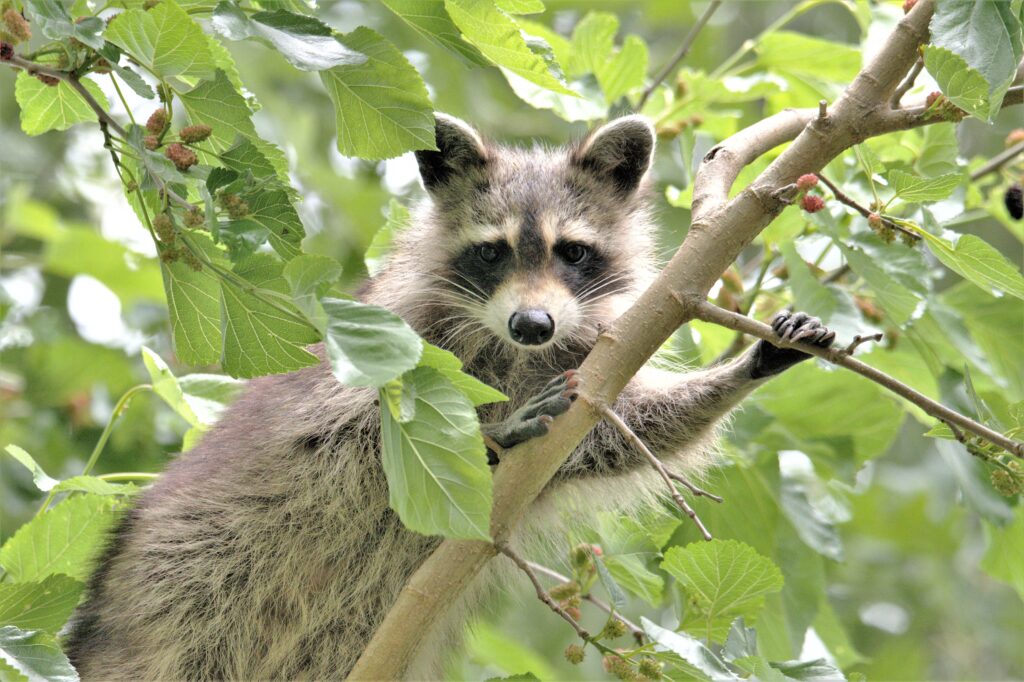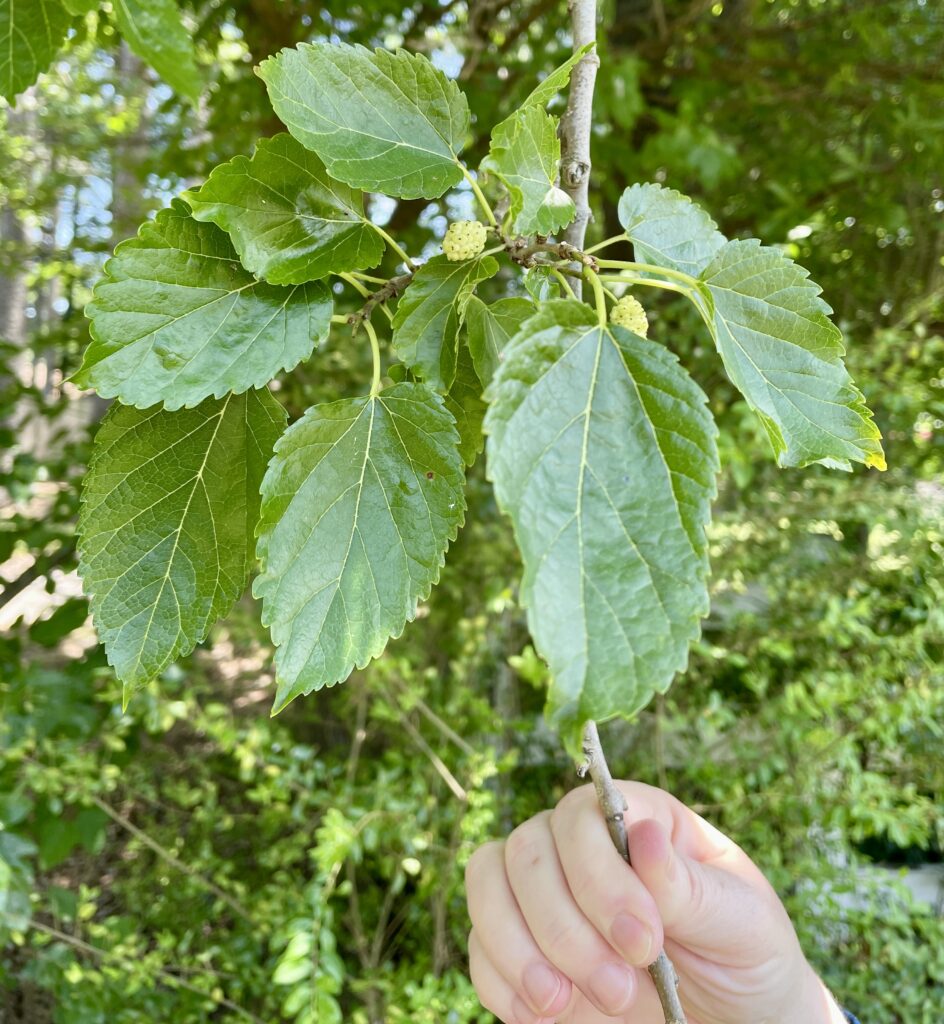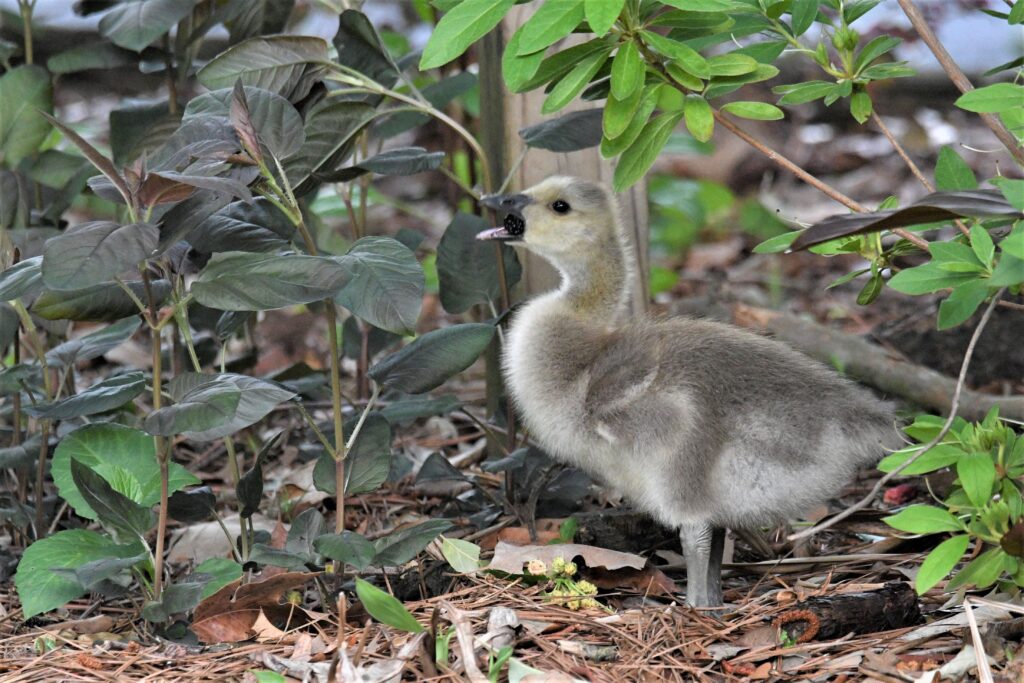
By Mary Reid Barrow.
Photos by Denise Maples
A half dead white mulberry tree in a hedgerow between two yards was smothered in honeysuckle, greenbrier, grapevine, and Virginia creeper when Denise Maples moved to Ballylinn Farms in Kempsville five years ago.
“The tree was literally tied up by vines and on the brink of destruction,” Denise said.
Now, after lots of weeding and hacking out vines, she says, “I have a living and giving mulberry tree. I’m the human harvester and mulberry preserve maker.” The berries are ripening into “sweet tart” fruits now.
And then, there are the “fur ornaments,” as her husband calls the raccoons and squirrels that dine on the berries. The raccoons “climb and carefully balance themselves on the willowy branches to eat,” she said. Squirrels also love the dark purple fruits, and a pair of geese even bring their goslings to forage under the tree for fallen fruit.

“I can’t begin to count the species of birds that partake on the mulberry’s delicacies,” Denise added.
But wait, some of you might say. The white mulberry tree is not a native and, in fact, is known as an invasive species in many parts of the country! White mulberries, the host tree for the silkworm caterpillar, were brought here from China more than 200 years ago. Hopes of starting a silk industry never materialized and the white mulberry spread through the south and farther.
Here in Virginia, it is classified on the lower end of invasiveness, primarily because it is a threat to our very similar native mulberry, the red mulberry.

Both trees start out with white berries which turn purple when ripe, and both have oval, toothed leaves, but red mulberry leaves have hairy undersides. Both trees also may have three-lobed leaves.
You are most apt to run across the white mulberry here. In fact, there is one, pictured above, growing in the hedgerow behind LRNow’s office on Holland Road. Office Manager Natasha Roberts is eyeing the berries as they ripen in hopes of gathering enough to make jam or syrup herself.
Denise, whose home on the Eastern Branch of the Elizabeth River, is an Elizabeth River Star Home, grows oyster spat, and is a native plant fan. She supports LRNow too, and she also loves her white mulberry tree, despite its faulty heritage.
Even though it is unwanted and unsung, Denise’s white mulberry is definitely “living and giving.”
